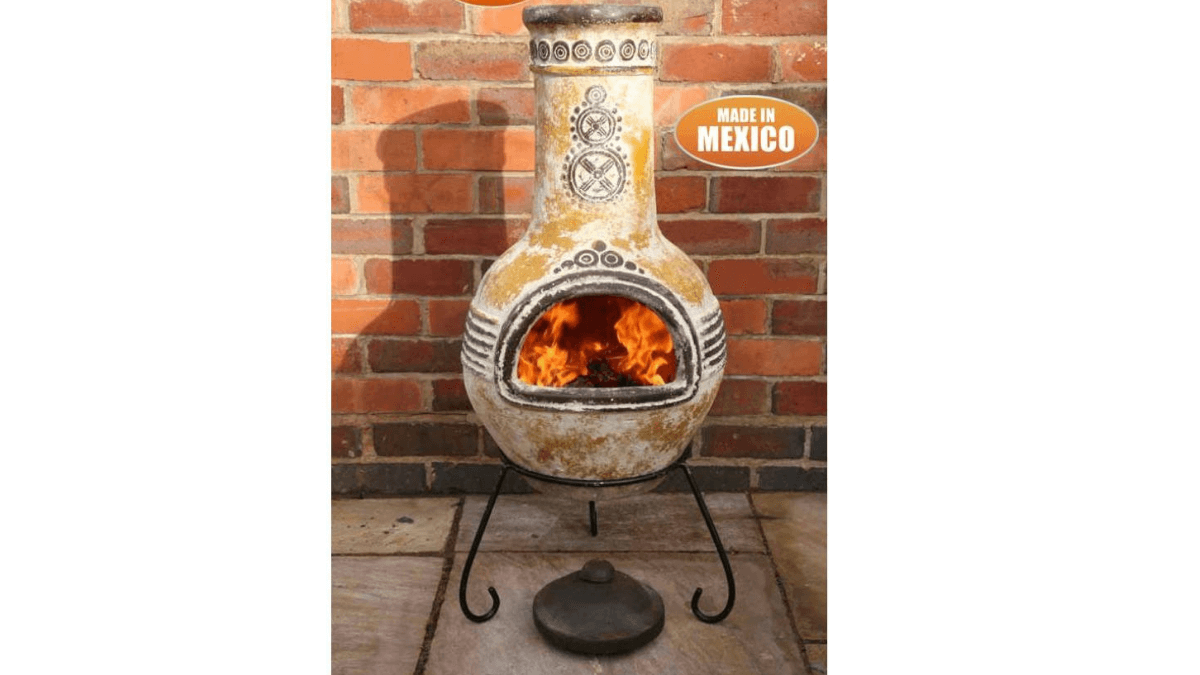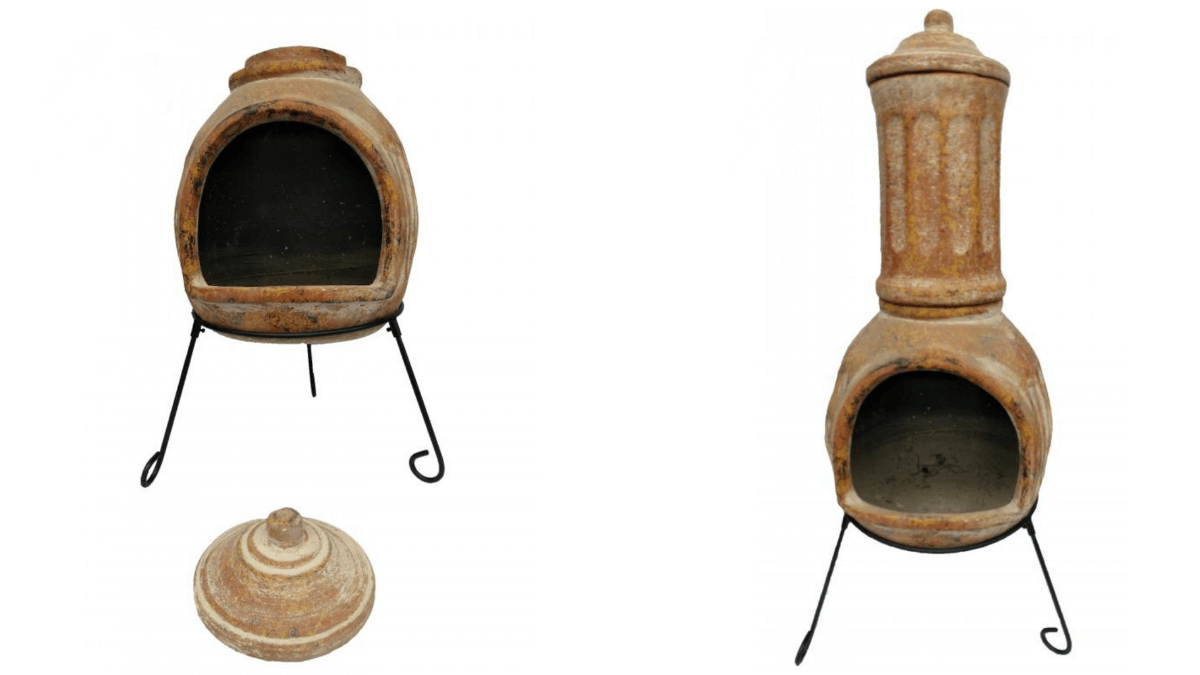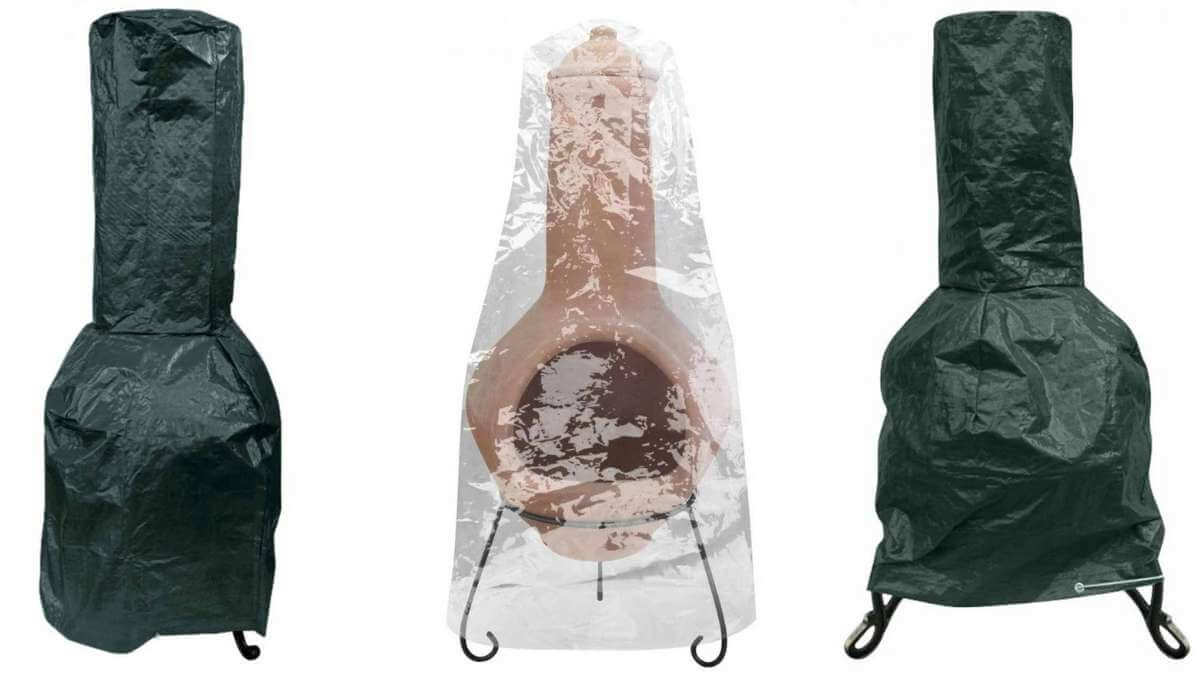Chimenea: The Six-Step Guide to Winter Maintenance
A chimenea is a great investment for anyone that loves spending time in their garden. This freestanding fireplace, typically made from clay, metal, or ceramic, such as the popular Gardeco or La Hacienda Chimenea, lets you burn coal or wood to stay warm and cosy outdoors.
Light some wood or coals and experience a toasty fireplace that keeps you warm for hours - perfect for those cool summer evenings with friends and family!
However, as winter approaches, you should consider how you plan on maintaining your chimenea.
If you're considering adding a chimenea to your garden, you can explore our diverse collection of chimeneas to find one that suits your style and needs
This is our Six-Step Guide to Winter Maintenance:
-
Cure Your Chimenea
-
Store Your Chimenea
-
Be Careful When Moving the Chimenea
-
Use a Sealant for Protection
-
Keep a Lid on Top of the Chimenea
-
Use a Chimenea Cover
Winter weather conditions can be bad news for clay and cast iron chimenea. This is because the extreme weather conditions, which typically see lots of snow, rain, frost, and freezing temperatures, will damage your chimenea.
So, if you don’t take the necessary steps to prepare your chimenea for winter, there is a good chance it will become partially damaged or completely broken come spring.
However, this doesn’t need to be the case, and we put together our complete six-step guide to winter maintenance for your clay, metal or ceramic chimenea.
Let’s get going…
Step One: Is Your Chimenea Cured?
Have you ever wondered why we cure a chimenea? Just like a new pair of shoes need breaking in, your chimenea needs to get used to the heat before it's fully ready to function.
Your chimenea is susceptible to damage without proper curing, especially in the harsh winter months. Curing prepares your chimenea for the heat to come and avoids what we call 'thermal shock,' which can lead to cracking.
The curing process isn't a one-time event; it's a journey. Usually, this journey lasts about a week. Start with small, controlled fires and gradually build up to larger ones over time.
It's like training your chimenea for a marathon – you wouldn't start with a full 26-mile run, would you? So treat your chimenea the same way. Let those fires burn out naturally each time, and let your chimenea cool down before repeating the process.
This curing process is like a workout for your chimenea, strengthening it from the inside out, making it tough enough to withstand the rigours of winter.
Remember, your chimenea still needs some TLC even after this rigorous training. Please make avoid leaving your chimenea exposed to extreme winter conditions. Protect it, and it will serve you well for years to come!
Step Two: Choose a Storage Location
There are two main storage options for your chimenea during winter - indoors or outdoors.
Indoor storage, such as in a shed or garage, is one of the simplest yet most effective ways to protect your chimenea during winter. Storing inside limits exposure to moisture and freezing conditions, making it less likely to be damaged.
Even if you are storing it indoors, you can follow the rest of our step-by-step maintenance guide, as it will only increase the long-term durability of your chimenea.
Storing outdoors is a little more challenging for maintaining your chimenea. However, some people simply don’t have indoor storage space, which is where the rest of our maintenance tips will come in handy!
Step Three: Be Careful When Moving the Chimenea
A chimenea is heavy and delicate, meaning you must be careful when moving it, as dropping it may cause it to break. This is especially true for clay chimeneas, which are more fragile than cast iron chimeneas.
Ideally, you should use a dolly or similar transport device to safely move the chimenea from one location to another. If you don’t have access to this, ensure at least two people carry the chimenea, providing a clear path to avoid accidentally tripping and dropping it.
Also, remember the smoke stack and fire bowl are usually two pieces joined together, so make sure to carry them from the base of the chimenea. Carrying from the smoke stack may damage it or cause it to snap in two!
Or consider a two-part Clay Chimenea like the Gardeco Jumbo Muro (shown below); this makes moving and storing a breeze.
Step Four: Use a Sealant for Protection
Treating your chimenea with a protective sealant is one of the best ways to protect it from moisture and fluctuating temperatures. Even though most come with a pre-treatment when you buy it, this typically wears off after several months, especially after frequent use.
So, if you’ve used your chimenea a lot throughout the summer, it may require a new coat of sealer to keep it safe during winter. The treatment option you use depends on the type of chimenea.
For example, a cast-iron chimenea is treated with protective paint. This provides a nice finish and a protective seal across the surface to reduce the impact of moisture. Make sure to choose a paint sealer that is heatproof!
Top Tip: You may also need to sand down a metal chimenea before painting it!
If you have a clay chimenea, choose a suitable outdoor sealant product, like those used on fences or garden furniture. Protective chimenea paint works well by producing a small layer across the clay, keeping it safe from moisture exposure.
Again, ensure it is a sealant that can withstand large heat changes.
Regardless of the type of sealer, most last around 3-6 months. So, one treatment should last the entire winter - just apply it before winter arrives.
Step Five: Keep a Lid on Top of the Chimenea
There is a good chance that your cast iron chimenea comes with a rain lid - be sure to take advantage of this and cover the top of the chimney throughout winter.
This ensures that no rain gets in through the smoke stack, which may cause water to pool inside the fire bowl. If water gathers here, it can cause rusting and eventually cracking.
It is also a common issue with a clay chimenea, which doesn’t always include a lid. If your chimenea has no lid, use a makeshift one out of a suitably sized plant pot or container.
Most of our Gardeco chimenea come with a clay lid; if this is lost or broken, we can usually find one to fit your chimenea.
Step Six: Use a Chimenea Cover
Moisture is your chimenea’s worst enemy over the winter. A chimenea cover is one of the best ways to protect your fireplace over the winter months - one may have already been included when buying the chimenea.
We highly recommend using a chimenea cover to protect it from extreme conditions, namely moisture and low temperatures. Be sure to choose a chimenea cover that fits snuggly across the entire structure, as this reduces exposure to moisture and freezing conditions.
For a clay chimenea, a cover helps to avoid cracks developing from constant exposure to moisture that continually expands and contracts inside the porous material. With a cast iron chimenea, a cover helps to avoid moisture on the surface that causes rusting.
However, before you wrap it with a chimenea cover, ensure the entire structure is dry.
If you don’t have a cover or can’t afford one, consider using a tarp as a makeshift cover.
Frequently Asked Questions
Can I Leave My Chimenea Outside During Winter?
It's not recommended to leave your chimenea outside during winter. Extreme cold, especially if coupled with moisture, can cause damage or cracking. If you must leave it outdoors, ensure it's covered and elevated off the ground to protect it from moisture. However, the best option is to store it in a dry, sheltered location.
What is the Difference Between a Clay Chimenea and a Ceramic Chimenea?
Clay and ceramic chimeneas differ primarily in material, aesthetics, and maintenance needs. Clay chimeneas are traditional, often handcrafted, and require curing before use. They provide a rustic look but need protection from extreme weather. They radiate heat evenly but may be less durable and lighter in weight.
Ceramic chimeneas are more durable and weather-resistant, requiring less maintenance. They heat up faster, retain heat longer, and typically offer a broader range of designs due to the material's versatility.
However, they're usually heavier and may not provide the same traditional aesthetic. The choice between the two depends on your specific needs and preferences.
How Often Should I Apply a Sealant to My Chimenea?
The frequency of sealant application depends on the type of your chimenea and its exposure to weather conditions.
For clay chimeneas, applying a sealant at least once a year, ideally, before winter, is recommended to protect it from moisture and frost. Check the manufacturer's instructions for ceramic or metal chimeneas, as they may not require a sealant. Always ensure the chimenea is clean and dry before applying any sealant.
Final Thoughts
Completing routine winter maintenance for your chimenea is the best way to ensure its long-term durability. Ideally, store it indoors to keep it safe from extreme temperature changes and moisture exposure.
The best way to protect a chimenea outdoors over winter is to use a quality chimenea cover or, at the very least, a rain lid.
If you treat it well, your chimenea will last a long time, which we all want!
Subscribe to our email
Enter your email address below to receive a monthly email with links to all the latest blog posts. Simple unsubscribe at any time.








